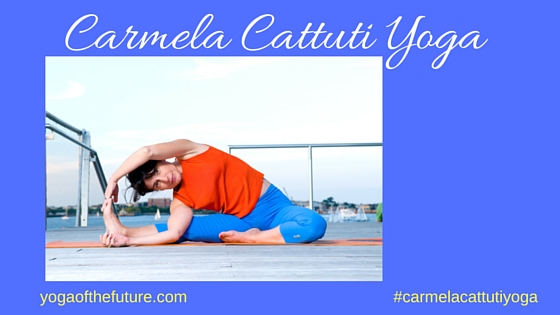The
Role of the Abdominal Muscles in Yoga
by Carmela Cattuti, LPN, CYT
The function of the abdominal muscles
in yoga has always been nebulous. Yoga teachers often refer to the
abdominal muscles as the “core.” Traditionally, the core refers
to the solar plexus (area above the navel and below the chest).
During the early infiltration of yoga into the west teachers rarely
referenced the abdominal muscles. As yoga practitioners and teachers,
it helps to have a working knowledge of these muscles physically and
energetically.
The human body has three sets of
abdominal muscles: the rectus abdominis, the obliques, and the
transverse. The rectus abdominis is the outermost muscle and it runs
up and down the abdominal area. This is the muscle people generally
think of as the abdominal muscle. It supports our lower back when
practicing yoga. There are internal and external obliques. The
external obliques run downward from the rib cage to the pelvis; the
internal obliques are underneath the external from the pelvis to the
rib cage. These muscles are important in forward bends, side bends,
and twists. The transverse abdominal muscle is the innermost
abdominal muscle. It runs straight across the back and the abdomen
like a girdle. This muscle supports the organs and holds everything
in place. This is the muscle we want to contact while practicing
yoga. It is actually our core. It supports our structure and needs to
last a life time. These muscles need to be flexible and strong. The
abdominal muscles are a major player in yoga and in order to develop
a sustainable practice our abdominal muscles need to fully
participate.
During the 1980s there was little talk
of the abdominal area when yogis practiced. It was either about
alignment or yoga was a transcendent spiritual practice with little
consideration of form. In the west, yoga was about the exterior and
how we moved our arms and legs and ascending through our crown.
Awareness of the abdominal muscles started to enter yogis' practice
during the mid 1990s. Practitioners began to move from the inside out
and to create shapes based on inner energy, allowing it to flow
outward. Moving from the inside out means a deep awareness of the
abdominal muscles so that we not only move safely in and out of
postures, but we also access our core energy. This focus brings us
closer to who we are and it is reflected in our practice, making our
postures an organic flow. If we do not move in this manner then our
solar plexus becomes congested and prevents us from accessing our
innate wisdom on how to move for our bodies.
The most significant advantage for
practitioners to develop a practice where the abdominals are major
players is the opening of the heart. The more awareness we have of
the abdominals the more the heart is supported and can blossom while
practicing. If we only focus on our limbs then our connection to our
heart is distant. Of course, we need to have balanced alignment while
in postures, but once we become familiar with our core and know how
to use it for our practice, then our heart can expand and we can hear
its wisdom. When we do this then our practice becomes organic and we
follow the heart, while accessing the power of the abdominal muscles.
